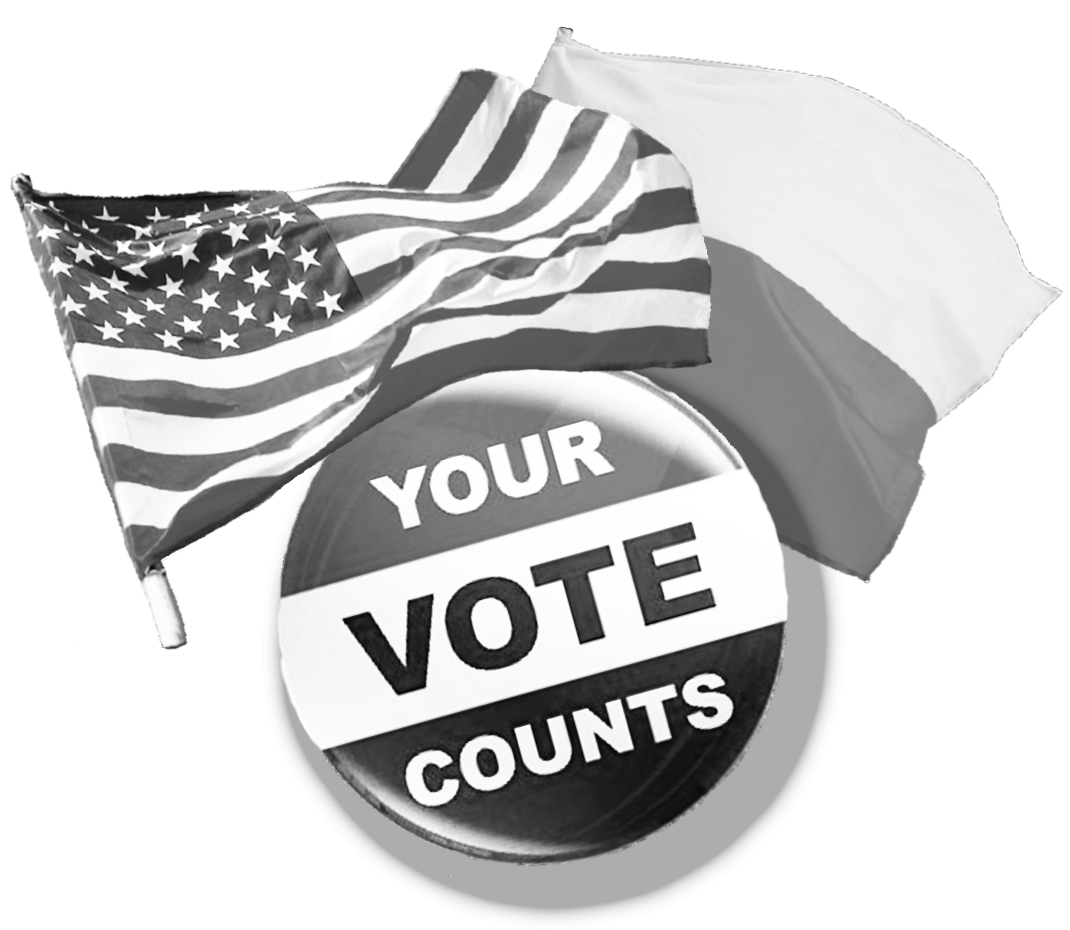Archive for October, 2021
2021 Polish Independence Day and Veterans Day Luncheon
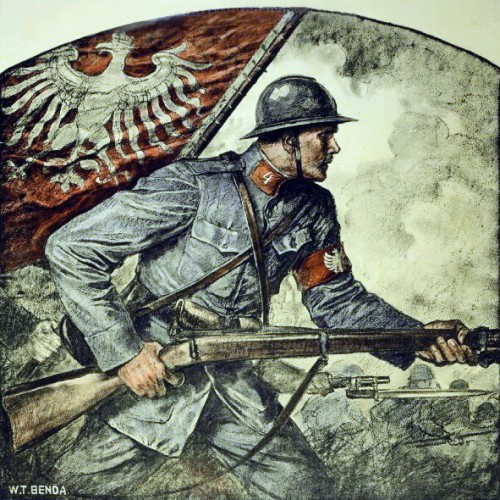
Polish American Congress Wisconsin Division
cordially invites all to the
POLISH INDEPENDENCE DAY
VETERANS DAY LUNCHEON
Sunday, November 7, 2021
POLISH CENTER OF WISCONSIN
6941 S. 68th Street Franklin, WI 53132
► Map of Location ◄
Cash Bar and Raffle: 12:00 pm
Luncheon 1:00 pm
Cost: $30.00 per adult member ($40.00 per non-member), $15.00 per child 12 and under
For additional information, please contact
David Rydzewski at (414)964-2447 or david.rydzewski@att.net
2021 Prof. Pienkos lecture: Polish Vote in US Presidential Elections
Is There a ‘Polish Vote’
in U.S. Presidential Elections?
Lecture presented on October 20, 2021
by Dr Donald Pienkos
Professor Emeritus of Political Science
University of Wisconsin-Milwaukee
This is a question that should get a quick YES answer. But a far more interesting question is whether Polish American voters have played a significant role in affecting the outcome of U.S. presidential elections – the most important decision we make as citizens.
To download the lecture handout, click on the image above or
► download the handout here ◄
We have plenty of information to back up the reality of Polish Americans as voters in presidential elections. For example, in Wikipedia, there is an entry that gives plenty of survey data on the Polish vote in U.S. presidential elections going back all the way to 1916 – over 100 years!
Of course the Polish vote has changed over time, due to the transformation of the Polish population in the United States from immigrant status to full integration into the American ‘melting pot’.
Back in 1916 there were about 4 million people of Polish origin in the U.S. – out of about 100 million in all – or 4 percent of the population. But a third of them were immigrants. Most of them were not yet citizens and could not vote. And many of their American born children were too young to vote. Thus, the “Polish vote” in 1916 was just a ‘tweence’ over 1 percent of the total vote for President that year. Not much.
But by 1940 – things had changed dramatically. By then nearly all of the immigrants had become citizens and they and so many of their American-born children and even some of their grandchildren had reached voting age. So by 1940, Polish Americans made up perhaps 5 or even 6 percent of the voting population. This was an enormous change – something politicians very well recognized!
Since then the Polish American population has continued to change.
 Today only about 4 percent of all Polish Americans are foreign born. Few Polish Americans – whether they are the sons and daughters, grandchildren or descendants of immigrants – speak Polish fluently. Far fewer are in ethnic organizations of any kind whether we are talking about their belonging to ethnically based parishes or fraternals. Polish Americans are far more economically diverse too. And politically, Poles have gone from being 90 percent for the Democratic party in the 1930s and 1940s to identifying slightly more as Republicans than as Democrats – since the 1970s.
Today only about 4 percent of all Polish Americans are foreign born. Few Polish Americans – whether they are the sons and daughters, grandchildren or descendants of immigrants – speak Polish fluently. Far fewer are in ethnic organizations of any kind whether we are talking about their belonging to ethnically based parishes or fraternals. Polish Americans are far more economically diverse too. And politically, Poles have gone from being 90 percent for the Democratic party in the 1930s and 1940s to identifying slightly more as Republicans than as Democrats – since the 1970s.
Today about 3 percent of all Americans continue to identify as Polish – about 9.5 million in all. This decline is due to changing birthrates, the entry of many new immigrations into the country and Polish Americans’ own full and successful integration into the mainstreams of American life.
Still, they have remained a factor in elections – including presidential elections – especially under two conditions – when the election is closely contested and when Poland is a salient issue.
The reality of a Polish vote is also due to another important fact – that most Polish Americans live in just 10 states of the United States – New York, Pennsylvania, New Jersey, Maryland, Connecticut, and Massachusetts, and in the east and Illinois, Michigan, Ohio and Wisconsin in the Midwest.
Back in 1940 about 7 out of every 8 Polish Americans lived in these ten states – 86 percent. In 1980, 77 percent lived in them. In 2018 61 percent were residing in those same ten states.
In 2020 Polish Americans made up 8.6 percent of Wisconsin’s population, 8.3 percent in Michigan, 7.3 percent in Connecticut, 6.8 percent in Illinois and Pennsylvania, 5.5 percent in New Jersey, 5.4 percent in New York, 4.5 percent in Massachusetts, 3.7 percent in Ohio and 3.1 percent in Maryland. In other words they could matter in our presidential elections when they are close.
Indeed, we have plenty of good information to conclude that in four closely fought presidential elections Poland was an issue of significance. And in them the Polish vote mattered a great deal.
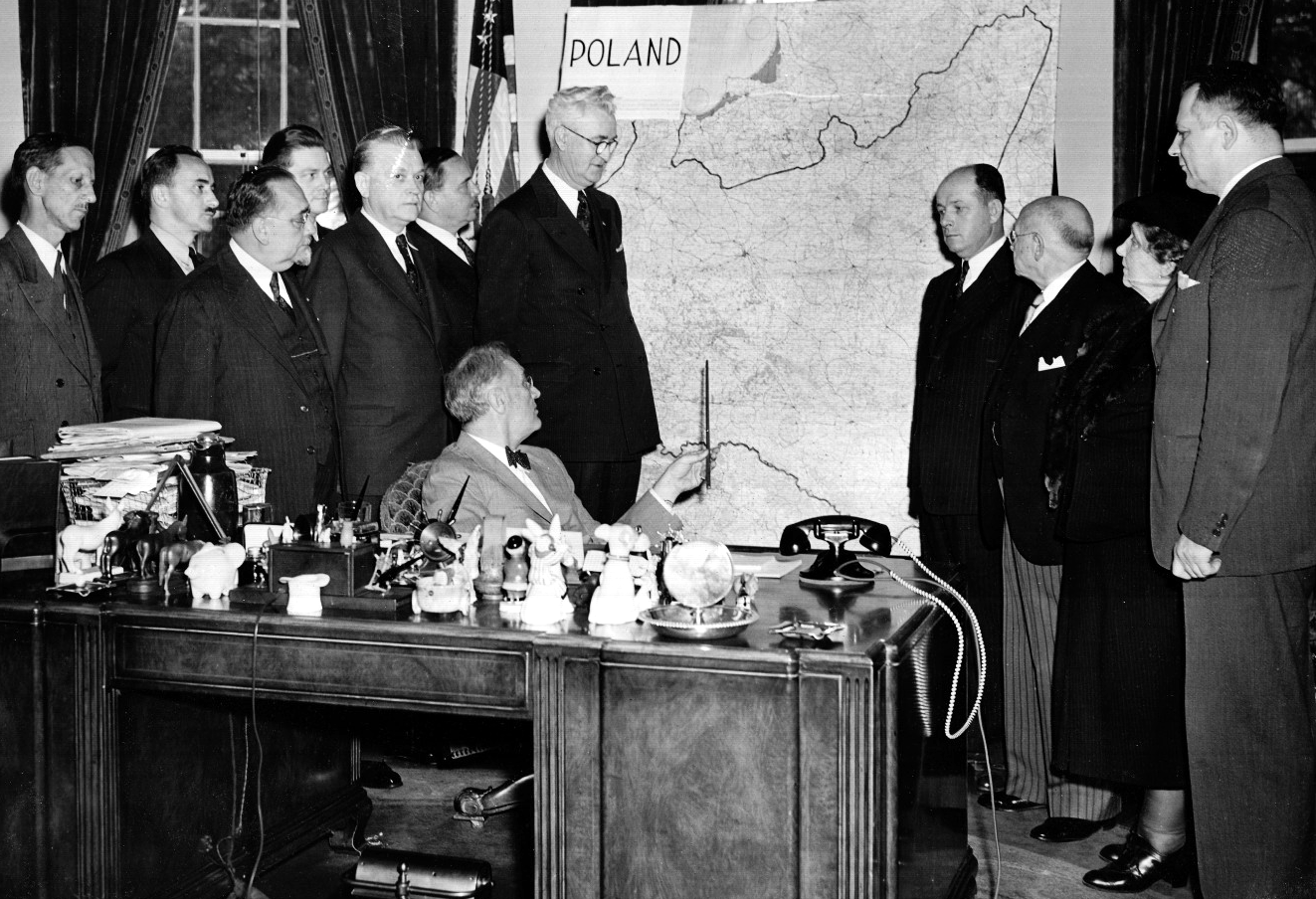
On October 11, 1944: President Franklin D. Roosevelt meets in the Oval Office with Polish American Congress leaders to mark the annual Pulaski Day observance and just weeks before the November election. Behind the President is a map of pre 1939 Poland whose borders the President had privately ceded to Soviet Russia’s ruler Josef Stalin the year before.
These elections took place in 1944, 1948, 1960, and 1976. Here’ let’s look at each of them more closely.
In 1944 Franklin D. Roosevelt, who was revered by Polish Americans and most other Americans because of his inspired leadership during the Great Depression and in World War II, won an unprecedented fourth term in office – and with the support of 90 percent of Polish voters. He did this, however, helped by his success in concealing vital information from the public about the private agreement he had made with Soviet ruler Josef Stalin about postwar Poland the year before.
In the election Roosevelt won 8 of the 10 states with the largest numbers of Polish voters, several of them by very narrow margins, in winning the election. In all he got 177 electoral votes from these ten states out of the 266 he needed to win. He lost only the 37 electoral votes of Ohio and Wisconsin. Now what might have happened had the “political dynamite” about his truly damaging talk with Stalin exploded before the election?
In 1948, Harry Truman barely won the presidency despite his losing some Polish voter support due to their anger over Poland’ fate following the Yalta conference of February 1945.
At Yalta, Churchill had accepted Soviet control over postwar Poland and a massive change in its borders. Indeed, the Polish American Congress denounced their action from the start as a violation of the very reasons the two leaders had given for fighting against Hitler.
In the 1948 election Truman did win 80 percent of the Polish vote, 10 percent less than in 1944. Moreover, he won only 4 of the ten states with the largest number of Polish Americans. And in two of those – Ohio and Illinois – his margin of victory was very narrow. He just squeaked in – thanks to his furious ‘whistle stop’ campaign to mobilize Democratic party voters – who then outnumbered Republicans nearly 2-1.
In 1960 Senator John F. Kennedy, like his opponent, Vice President Richard Nixon, was a staunch supporter of a Poland free from Soviet domination. Both candidates made strenuous efforts to win the Polish vote too.
Kennedy based his campaign on rebuilding Franklin Roosevelt’s “New Deal’ Coalition in a time of economic recession in our country. He went on to win the election by the narrowest of margins, helped enormously by the votes from nearly 80 percent of Polish Americans – 8 of the ten “Polish” states went to him, two again by very narrow margins – Illinois by 8,000 votes out of 4.8 million and New Jersey – by 22,000 votes out of 2.8 million. Without them the election would have been decided in the House of Representatives.
In 1976, President Gerald R. Ford narrowly lost his bid for office against Jimmy Carter in an election in which he committed an egregious debate blunder declaring that communist-run Poland was not under Soviet domination. Polish Americans, after voting Republican in 1972, went to Carter by a 60-40 margin, and were a key factor in bringing about his defeat. Ford lost 6 of the 10 most heavily Polish states – all ten had gone to Nixon in his landslide win in 1972. Later Ford himself blamed his defeat on his debate error, something connected with the so-called “Sonnenfeldt doctrine” that had plagued him before the election.
In the 1990s, one issue that never arose involved the newly free and democratic Poland’s entry into the NATO alliance. When both Democrats and Republicans came out in support of NATO expansion this issue was literally “taken off the table.” Thus, it played no role in 2000, when George W. Bush won the presidency in an amazingly close and controversial election.
Does the Polish vote still matter today? Yes I would argue, but only when the fate of Poland is salient, when the candidates recognize this fact, and the election is close. Thus, while the votes in three states with large populations of Polish Americans u– Pennsylvania, Michigan, and Wisconsin were crucial in Donald Trump’s narrow victory in 2016 and his defeat in 2020, in these elections Polish Americans like their fellow Americans were voting on the candidate and the issues, based on their own particular party orientations, views of the candidates, and their policy preferences.
As for the future, let’s just hope and pray that Poland’s fate is not in the balance in the years to come when it involves our presidential elections.
Questions?
2021 POLISH HERITAGE MONTH EVENTS
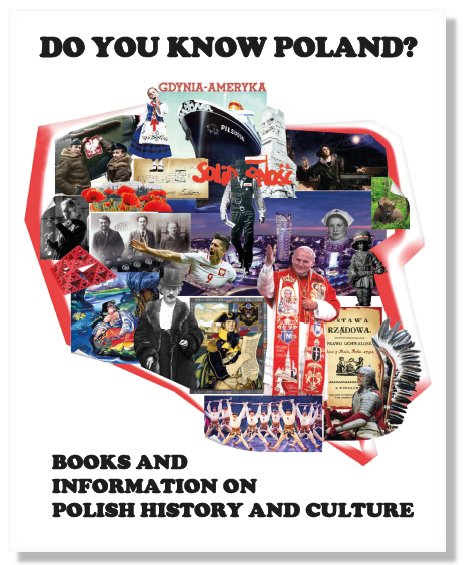
Do Something Polish to Celebrate POLISH HERITAGE
MONTH
Since 1981, October is Polish Heritage Month (click here for a short history review), a month when Polish Americans are especially proud of their roots, culture, and achievements.
Belonging to a Polish organization – such as the Polish American Congress – is one way to celebrate the legacy of our ancestors and all those continuing it in the present time.
Participating in Polish-themed activities and events is another. Here are three October 2021 events, all taking place in the Polish Center of Wisconsin.
(click on images to download the associated pdfs)
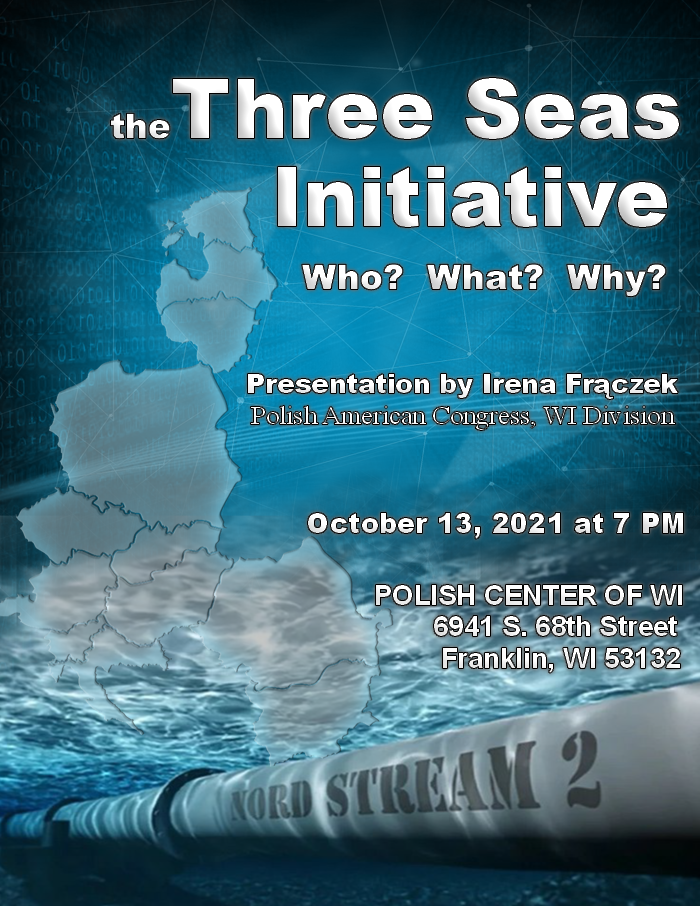 October 13 at 7pm
October 13 at 7pm
THE THREE SEAS INITIATIVE:
WHO? WHAT? WHY?
Presented by Irena Frączek
Introducing the main objectives and major players of the Three Seas Initiative, this brief survey will explore the main economic challenges and geopolitical pressures that led to the forum’s formation and will play a role in its future. As the Three Seas effort continues to unfold before our eyes, knowing more about its multiple facets – both in the regional and global context – would make it easier to follow the news and render support needed for the initiative to continue forward.
October 20 at 7pm
THE POLISH VOTE in U.S.
PRESIDENTIAL ELECTIONS
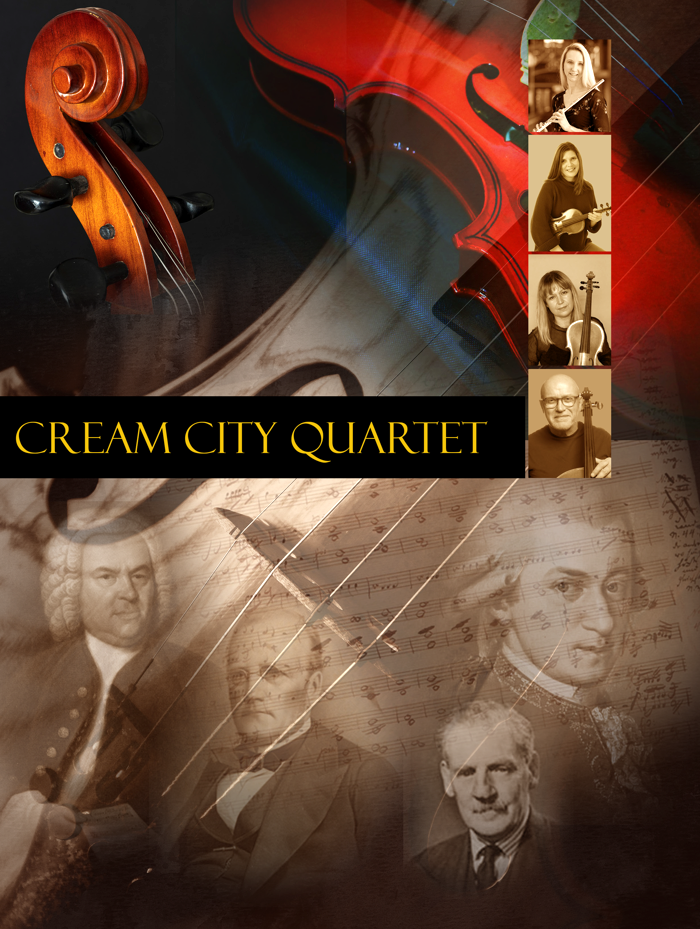 Presented by Professor Donald Pienkos
Presented by Professor Donald Pienkos
Professor Pienkos looks at the data from the past 80 years – when the size of the Polish vote became truly significant in numbers, with special attention to those elections that were closely contested. His findings will surprise those who attend.
Sunday, October 24 at 2pm
The Cream City Quartet
performs music by Moniuszko,
Bach, Jacob, and Mozart
The Cream City Quartet is comprised of Milwaukee freelance performers and educators Linda Nielsen Korducki, flute; Elizabeth Warne, violin; Olga Tuzhilkov, viola; and Scott Cook, cello. These musicians have performed with the Milwaukee Symphony Orchestra, and are members of the Milwaukee Ballet Orchestra, Skylight Opera Theatre, the Fox Valley Symphony Orchestra, the Oshkosh Symphony Orchestra, and the Wisconsin Philharmonic. All four members serve on the faculties of Concordia University, Alverno College, Cardinal Stritch University, and the Cello Institute of Milwaukee.Ticket information is available HERE
ALL EVENTS HOSTED IN POLISH CENTER OF WISCONSIN
► Map of Location ◄
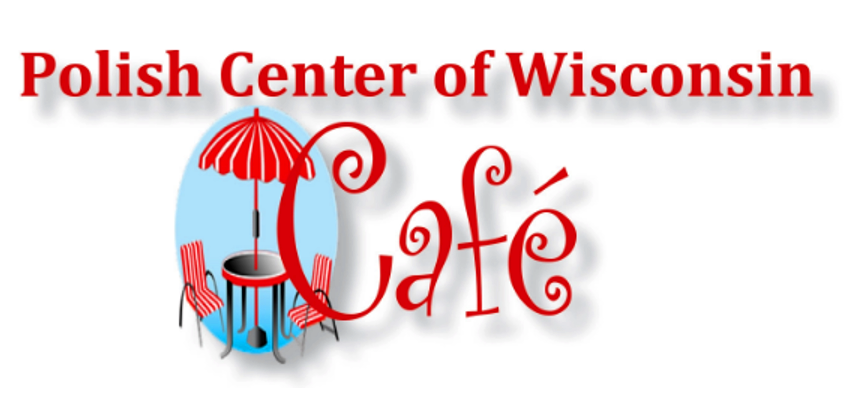
From April 14 through October 27, 2021
Polish Center of Wisconsin invites all to the
PCW Café
EVERY WEDNESDAY 4PM to 8 PM
Check the CAFÉ MENUfor specific days in advance
2021 “Freedom” Monument Unveiled in Stevens Point, Wisconsin
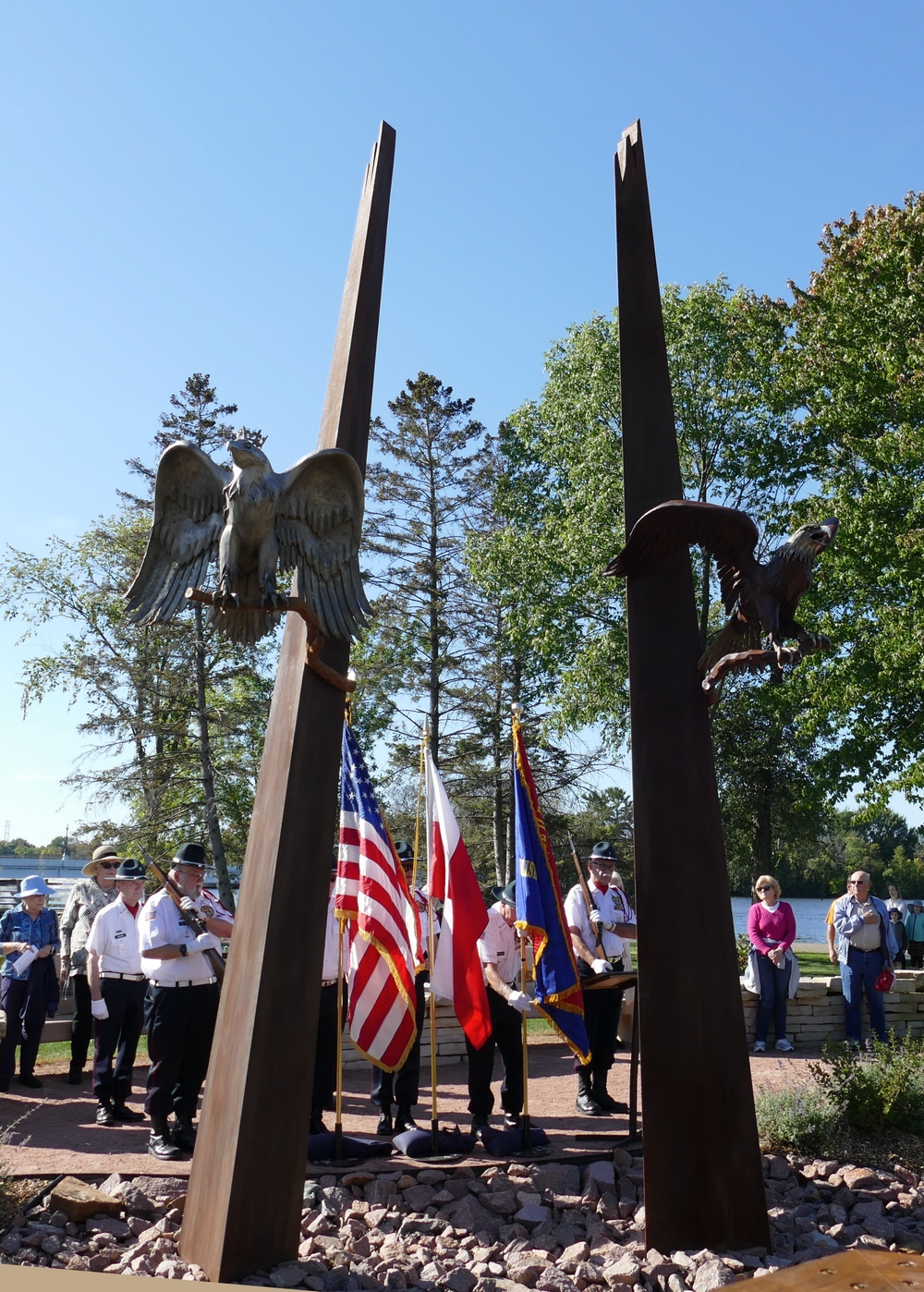
Monument
“For Our Freedom and Yours”
Unveiled in Stevens Point, Wisconsin
Text David Rydzewski
Photos Irena Frączek
In a Stevens Point, Wisconsin park, sited on the banks of the Wisconsin River, a monument of immense significance to Polonia, was dedicated on Saturday September 18, 2021.
With a Polish Legion of American Veterans color guard, the flags of Poland and the United States were set in place to begin the dedication. A moment later (in a scene that could have been scripted out of Hollywood) a bald eagle patrolling the banks of the river flew overhead.
The Monument “For Your Freedom and Ours” is a derivation of “Za naszą i waszą wolność” which comes from the unofficial motto of Poland. It was dedicated this day, as the creation of 1st generation Polish American artist Boleslaw Kochanowski.
Kochanowski was inspired by the Polish motto, which was a rallying cry used since 1830 to unite oppressed peoples from many nations. He says “the canted and skewed spires signify the difficulties of upholding and retaining justice and liberty. 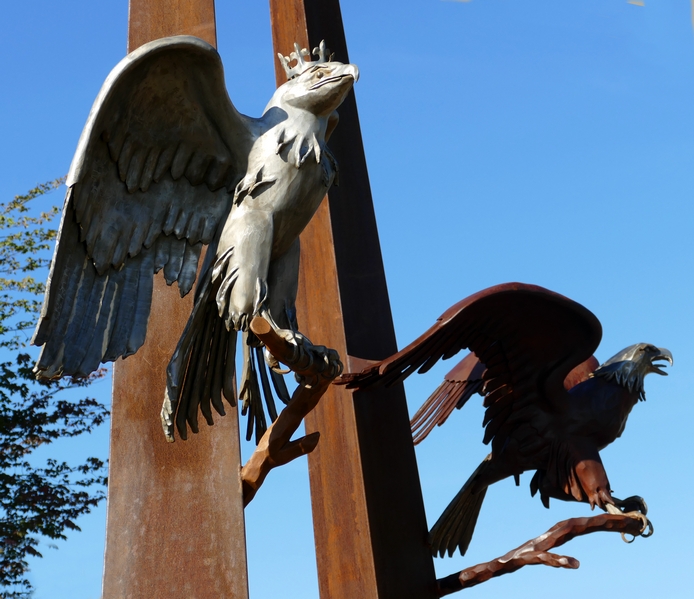 The cracked and broken tips of the spires indicate that freedom came with hardship and sacrifice.” He continues “Corten alloy and stainless steel are used for durability and permanence, signifying strength and longevity. These materials also differentiate the Polish white eagle and the American bald eagle.”
The cracked and broken tips of the spires indicate that freedom came with hardship and sacrifice.” He continues “Corten alloy and stainless steel are used for durability and permanence, signifying strength and longevity. These materials also differentiate the Polish white eagle and the American bald eagle.”
Moving to the podium was Master of Ceremonies Gayle Phillip. Gayle is the President of the Polish Heritage Awareness Society of Central Wisconsin. She began by welcoming the assembled guests to the Stevens Point “Cultural Commons” on this momentous day.
Gayle then introduced the first speaker, the Mayor of Stevens Point and Polish American Michael Wiza. Following Mayor Wiza, the speakers included:
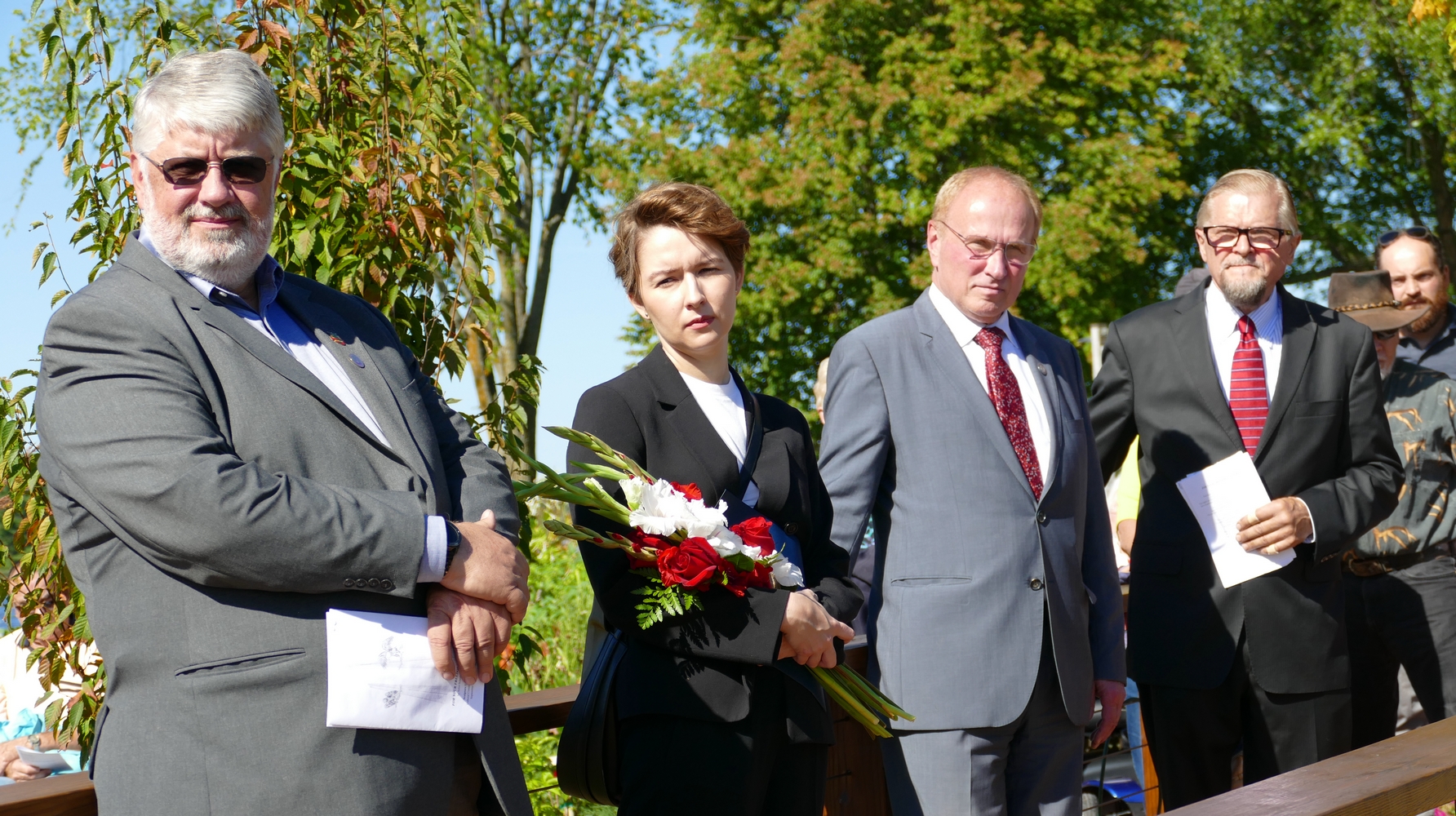 From left to right: Mayor Michael Wiza, Consul Paulina Szafałowicz, PNA and PAC President Frank Spula and artist Bolesław Kochanowski.
From left to right: Mayor Michael Wiza, Consul Paulina Szafałowicz, PNA and PAC President Frank Spula and artist Bolesław Kochanowski.
Consul Paulina Szafałowicz, who along with her own greeting, read a letter from Consul General of the Republic of Poland in Chicago, Małgorzata Bąk-Guzik;
Frank Spula, President of the Polish National Alliance and Polish American Congress;
Professor JinMan Jo from the University of Wisconsin- Stevens Point, College of Fine Arts;
David Rydzewski, President of the Polish American Congress – Wisconsin Division and PAC National Director.
Artist, Boleslaw Kochanowski introduced three of his sons Vincent, August, and Valerius who shared in the design, engineering, and creation of the monument, and his wife Anna, who along with amazing cooking of Polish food, manages the office; showing that this was a true family effort. Bolek also recognized and thanked his father, who so influenced his life.
Trish Mrozek led a board that assembled a group of donors from the Stevens Point area, who were the source of the funding for the monument. The donors include members of the Lemke, Ostrowski, Pisarski, Gollon, and Belke Families, and Heritage of Portage County.
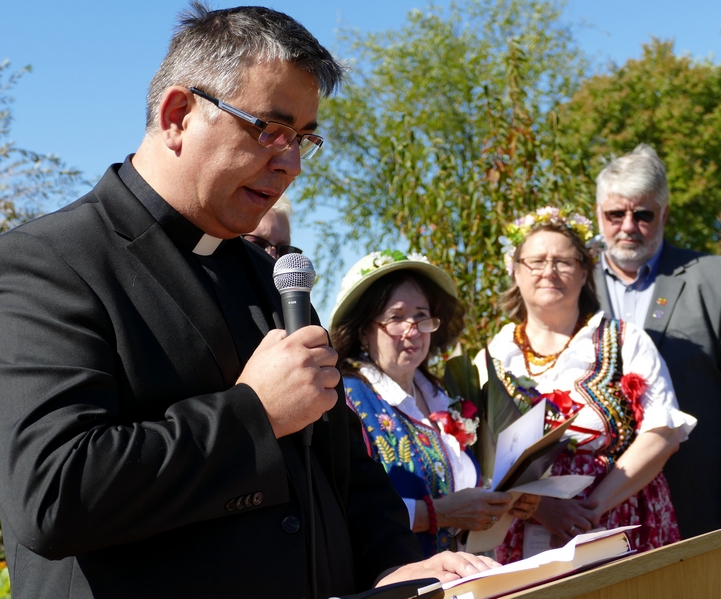 From left to right: Father Janusz Kowalski, Trish Mrozek, Gayle Phillip and Mayor Michael Wiza.
From left to right: Father Janusz Kowalski, Trish Mrozek, Gayle Phillip and Mayor Michael Wiza.
A blessing for the monument was given in both English and Polish by Father Janusz Kowalski, of Saint Lawrence Catholic Church in Wisconsin Rapids, Wisconsin.
Members of the press included a video team from Polish TV, and Stevens Point’s own Polish newspaper GWIAZDA POLARNA, and its editor and publisher Jacek Hilgier.
Boleslaw comes from a long line of blacksmiths, starting with his great uncle Hipolit Kochanowski who apprenticed Bolek’s father Boleslaw Kochanowski Sr. in Kotlice, near Zamość, Poland. Boleslaw Sr. passed his exams and became a blacksmith journeyman.
Bolek’s parents miraculously survived World War II, having been rounded up in Poland for forced labor in Nazi Germany. Upon Allied liberation they met and were married in the refugee camp at Gablingen Germany, starting their family there. They finally were allowed to emigrate to America where Bolek and a younger brother were born, joining their German born siblings.
Boleslaw Sr. began work as a lead blacksmith in the shops of the Chicago Transit Authority, later moving to Milwaukee, becoming the boilermaker-blacksmith layout designer at the huge shops of the Milwaukee Road Railway.
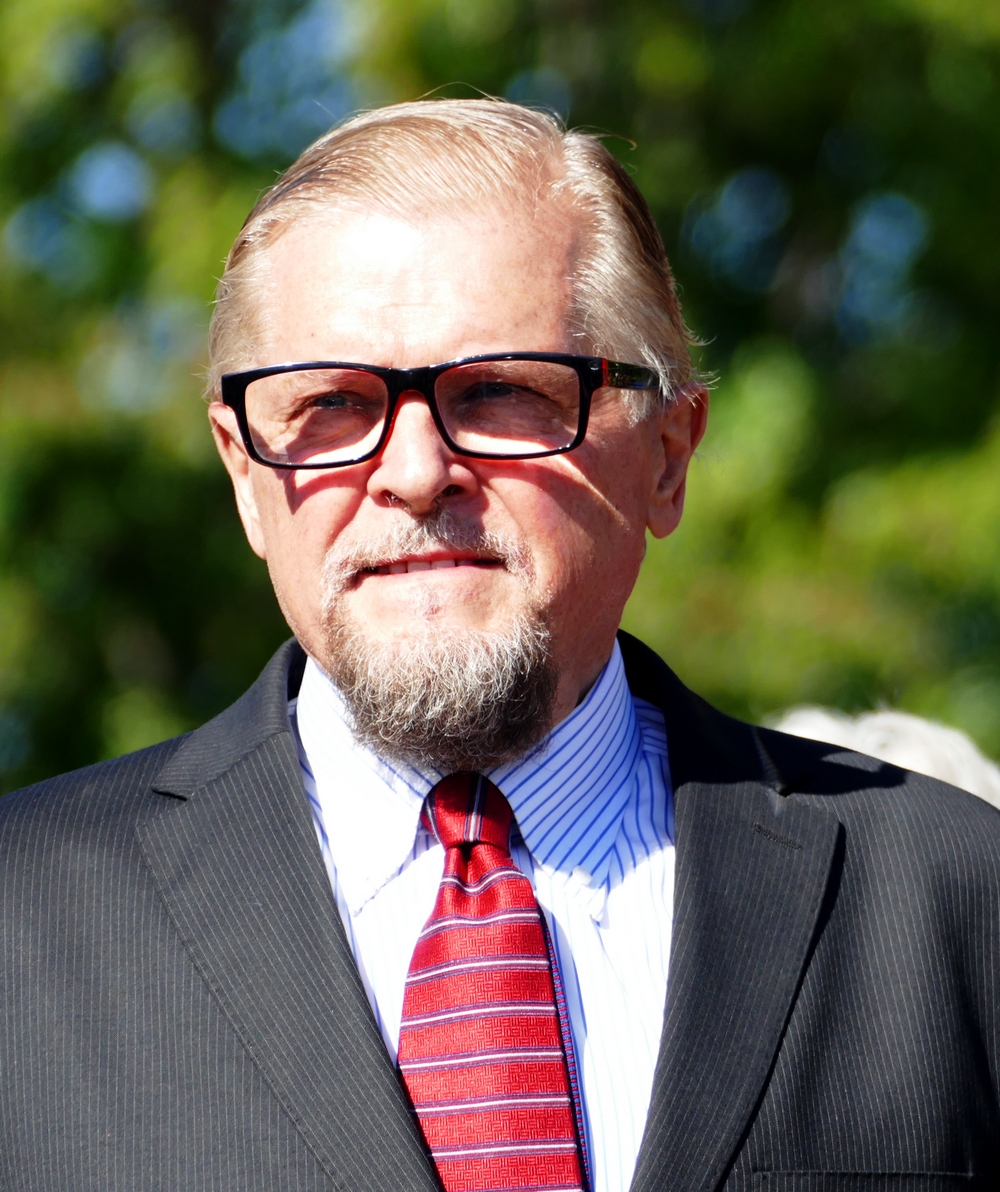 As a young man Boleslaw Jr. earned a degree in International Relations from the University of Wisconsin – Milwaukee, but the draw of working with his hands alongside his father, drew Bolek to the Milwaukee Road shops. Kochanowski Sr. had a motto “Look and Learn” which Kochanowski Jr. did, and he put that knowledge to use through the years, in turn passing the expertise to his own sons – the fourth generation.
As a young man Boleslaw Jr. earned a degree in International Relations from the University of Wisconsin – Milwaukee, but the draw of working with his hands alongside his father, drew Bolek to the Milwaukee Road shops. Kochanowski Sr. had a motto “Look and Learn” which Kochanowski Jr. did, and he put that knowledge to use through the years, in turn passing the expertise to his own sons – the fourth generation.
Striking out on his own to design and build architectural ironwork, Bolek’s talents led to commissioned works for gates, railings, screens, and fine metal artistic pieces. Gradually it evolved to works on a grander scale and now include monuments that adorn commercial and civic centers and parks.
The origins of this monument began with Polish leaders in Stevens Point who thought that there should be another significant piece of public art with a Polish theme, and Kochanowski was asked to submit designs for it. The setting would be a “Cultural Commons” area within a public park on the banks of the Wisconsin River. Areas within the “Cultural Commons” would show a connection with Stevens Point Sister Cities. One of which is Gulcz, Poland, which reflects an area where many early Polish settlers came from to Central Wisconsin
As the ceremony for the dedication was coming to a close, many in the audience were smiling, very proud of this monument and its symbolism of “This Glorious Fraternity of the Polish and American Brotherhood” and their own “Polishness”. A few even had a tear in their eye.
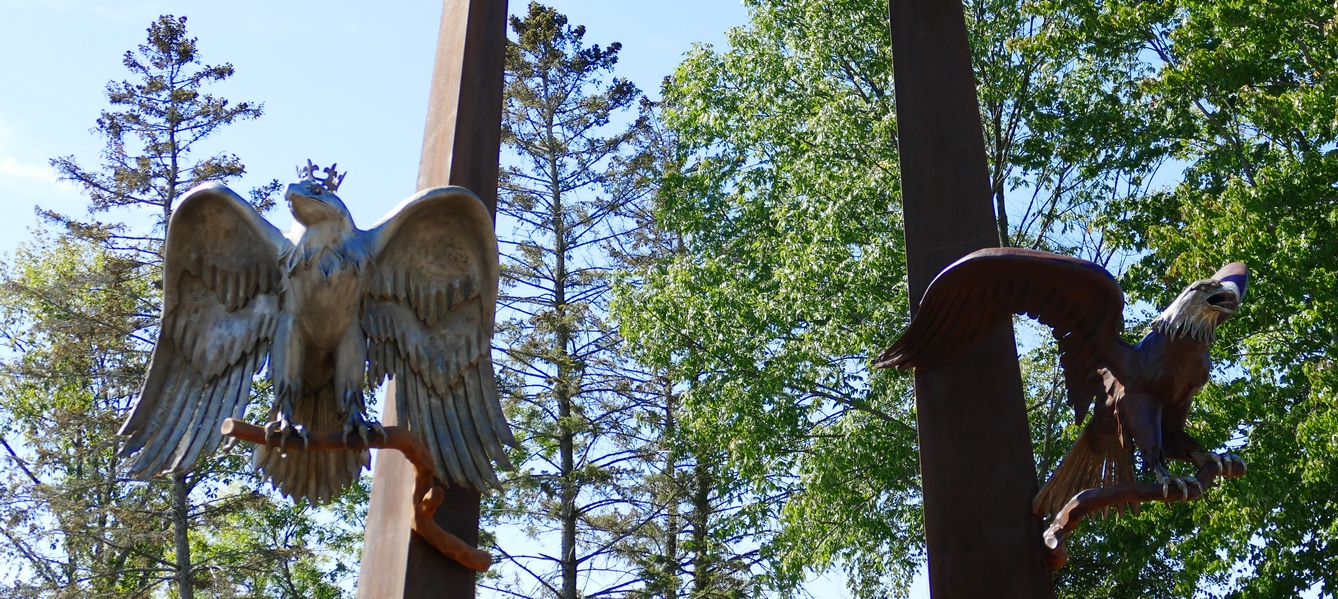
Archived Posts
- 2023 Merry Christmas
- 2023 Lighting the Light of Freedom on Dec 13 at 7:30pm
- Independence Day and Veteran Day invitation
- 2023 Wianki Festival
- 2023 May 3rd Constitution Day Celebration
- 2023 Lecture on Polish Borders by Prof. Don Pienkos
- 2023 REMEMBER THIS: Jan Karski movie premieres on PBS Wisconsin
- 2023 Upcoming lectures in the Polish Center of Wisconsin
- 2022 Polish National Independence Day
- 2022 Independence and Veteran Day Luncheon (invitation)
- 2022 Wianki, Polish Celebration of Noc Świętojańska (St. John’s Night)
- Celebrating Constitution of May 3, 1791 in Polish Center of Wisconsin
- 2022 Polish Constitution Day, Polish Flag Day and the Day of Polonia
- 2022 March Bulletin
- 2022 Polonia For Ukraine Donations
- 2022 Polish American Congress Condemns Russian Invasion of Ukraine
- 2022 PAC-WI State Division Letters to WI Senators and Representatives
- 2021 Polish Christmas Carols
- 2021 Panel Discussion: Martial Law in Poland 1981-1983 (REPORT)
- 2021 Panel Discussion: Martial Law. Poland 1981-1983 (invitation)
- 2021 Solidarity: Underground Publishing and Martial Law 1981-1983
- 2021 Polish Independence Day and Veterans Day
- 2021 Polish Independence Day and Veterans Day Luncheon
- 2021 Prof. Pienkos lecture: Polish Vote in US Presidential Elections
- 2021 POLISH HERITAGE MONTH EVENTS
- 2021 “Freedom” Monument Unveiled in Stevens Point, Wisconsin
- 2021 PCW Picnic and Fair
- 2021 Remembering Września Children Strikes (1901-1903)
- 2021 May 3 Constitution Day
- 2021 DYKP Contest Winners and Answers
- 2021 DYKP CONTEST EXTENDED and CASIMIR PULASKI DAY
- 2021 February announcements
- 2021 Polish Ministry of Education and Science oficials visit Wisconsin
- 2021 DYKP Contest, KF Gallery and Dr. Pease lectures
- 2020 Help Enact Resolution commemorating the 80th Anniversary of the Katyn Massacre
- 2020 Independence And Veterans Day
- 2020 Remembering Paderewski
- 2020 POLISH HERITAGE MONTH
- 2020 Solidarity born 40 years ago
- 2020 Battle of Warsaw Centenary
- 2020 The Warsaw Rising Remembrance
- 2020 June/July News: Polish Elections, Polish Films Online and more
- 2020 Poland: Virtual Tours
- Centennial of John Paul II’s Birth
- 2020 Celebrating Polish Flag, Polonia and Constitution of May 3rd
- 2020 Polish Easter Traditions
- 2020 Census and Annual Election
- Flavor of Poland (Update 3)
- 2020 Copernicus, Banach & Enigma talk
- 2020 Do You Know Poland and other announcements
- 2020 Flavor of Poland (Update 2)
- 2020 People and Events of the Year
- 2019 Holidays
- 2019 December Medley
- 2019 Independence Celebration
- 2019 Independence Invitation
- 2019 WI Study in Poland Reports
- Lecture: Poland’s Entry Into the NATO
- August 2019 anniversaries
- 2019 Polish Fest
- Celebrating Polish Constitution and Ignacy Paderewski
- WSIP 2018 Reports (Wisconsin Study in Poland)
- 2018 Christmas Carols
- 2018 Polish Independence and Veterans Day
- November 2018 events
- October 2018 Events
- 2018 Kashube Lecture Notes
- September 2018 events
- 2018 Polish Fest Report
- Upcoming 2018 Polish Fest
- Celebrating Polish Constitution Day
- Poland 1979-1989 (panel discussion)
- Protest the Passage of S.447 in the U.S. House of Representatives



